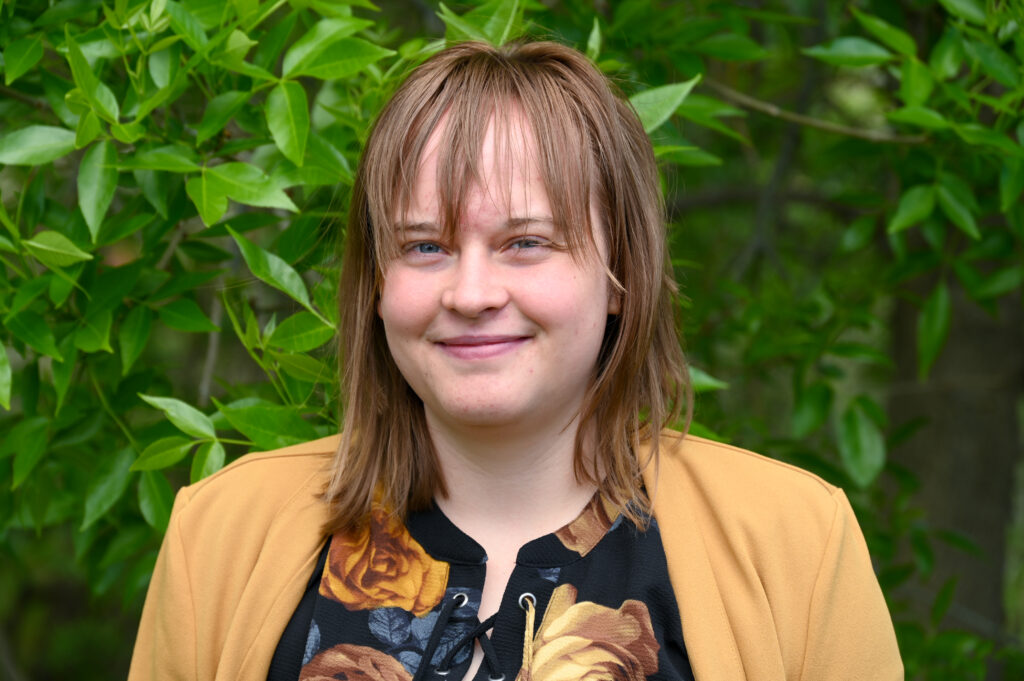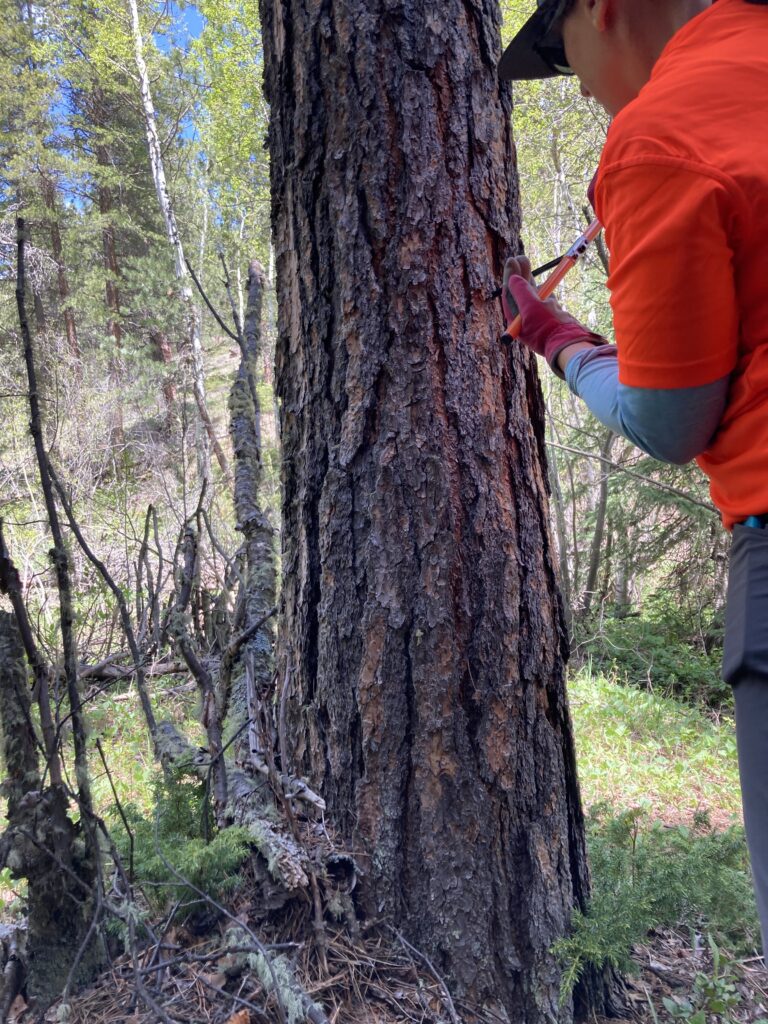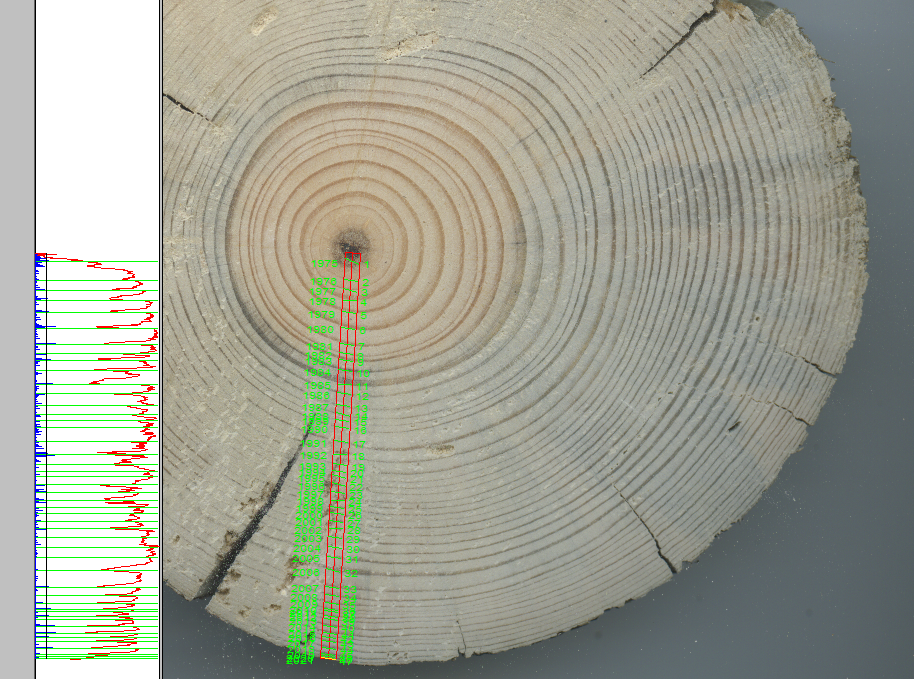


This summer we’re introducing interns in the RESESS, Geo-Launchpad, and USIP programs to shine a spotlight on the research projects they are completing throughout these 11-week internships and on their interests in geoscience.
Kalley Collins is a rising senior at the University of Wyoming who originally began as an anthropology major. But Kalley was interested in exploring how geology forms the environments in which humans live, leading to her now double majoring in geology alongside anthropology. It was this geology major that motivated Kalley to pursue a summer internship in geoscience, which led her to the RESESS program. Previously, Kalley has done summer internships centering around anthropology, such as studying stone tool flakes and refitting pottery shards in Wyoming.
Kalley is working under Dr. Holly Barnard and Dr. Katherine Lininger examining tree cores. In the first week of her internship, Kalley went out into the field at Gordon Gulch in Colorado to gather small tree cores from three distinct locations: a riparian zone (the area of land right next to a river where trees grow), a mid-slope location (near the river but at a higher elevation), and upslope at an even higher elevation. She then took the tree cores gathered from each location and examined them to see how the rings in each core varied, making inferences about how climate can influence tree growth.
The process of analyzing tree growth via their cores involves examining the spacing between the individual rings, which is essentially a cross section of the tree. Trees can grow much faster when they are young, so age must also be considered when running calculations based on tree growth. Kalley then compares her data with Palmer Drought Severity Index records, which estimates how wet or dry the climate was in the area based on temperature and precipitation.
Q&A
- What has been your favorite part of the RESESS program so far?
I really liked the lab group I was put with, it’s been super fun to go out and do field work with them and work on my project. Also thinking about the Earth in different ways because I’m working more with a geography department. It’s been really cool to work with streams, rivers, and what I specifically work with: tree cores. So it’s been cool to learn about different natural sciences and how to collect data and analyze them.
- What have you gained from your mentorship with Dr. Barnard and Dr. Lininger?
Definitely a lot of critical thinking skills; being able to think about a problem from different perspectives, and then how to approach that problem. Also being independent with setting goals, as well as how to work towards them.
- Have you learned about any new topics/research techniques that have really piqued your interest?
I didn’t really know a lot about tree cores before this, so I thought it was really interesting how you have to measure and trim a tree core in order to standardize it, because trees grow at different rates depending on not just climate, but age as well. It’s also really interesting to see how, depending on the species of trees, the ring woods are very, very different, so a bad year for a lodgepole pine is a lot different width-wise than a bad year for a ponderosa pine.
Going forward, Kalley is going to be continuing work on her undergraduate thesis studying the way human occupation changes vegetation growth over thousands of years. After that, Kalley is hoping to attend graduate school and, in the future, possibly work in government, ideally in a sector relating to archaeology.
Written by:
- Zach Courter, USIP Intern
- Posted: 5 August 2022
- Last updated: 2 August 2022
- Tags: internships, RESESS


